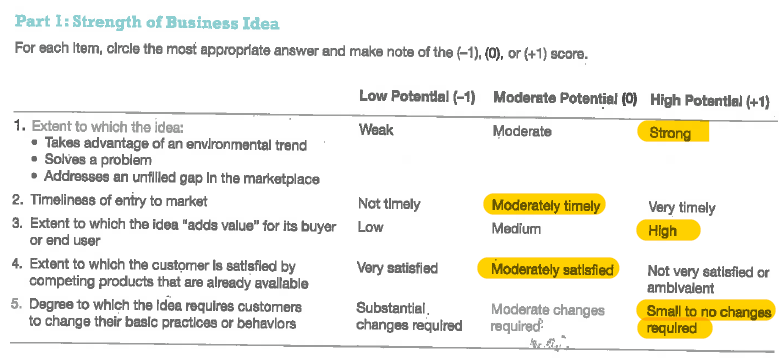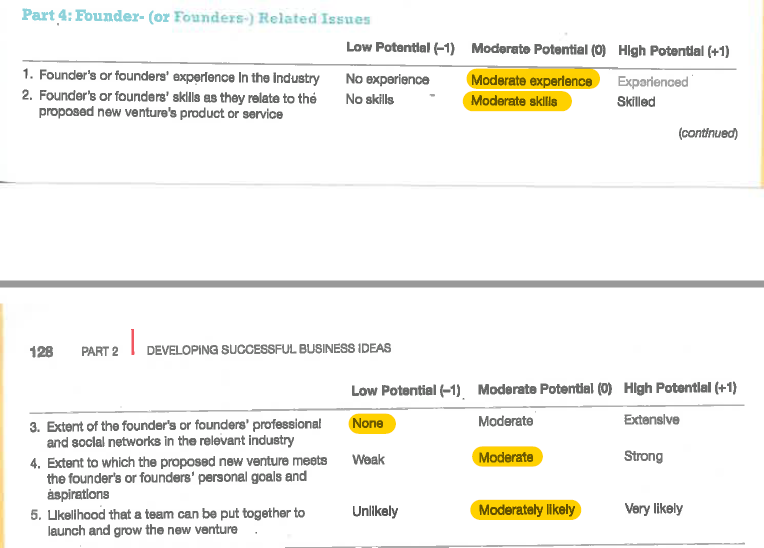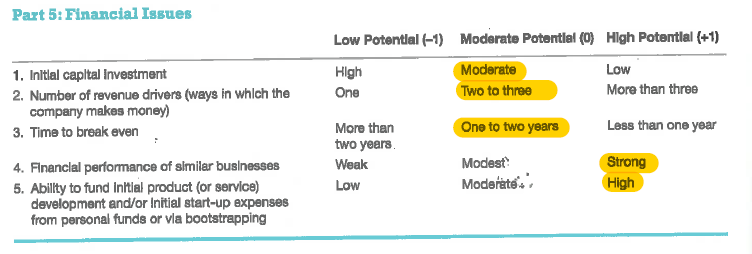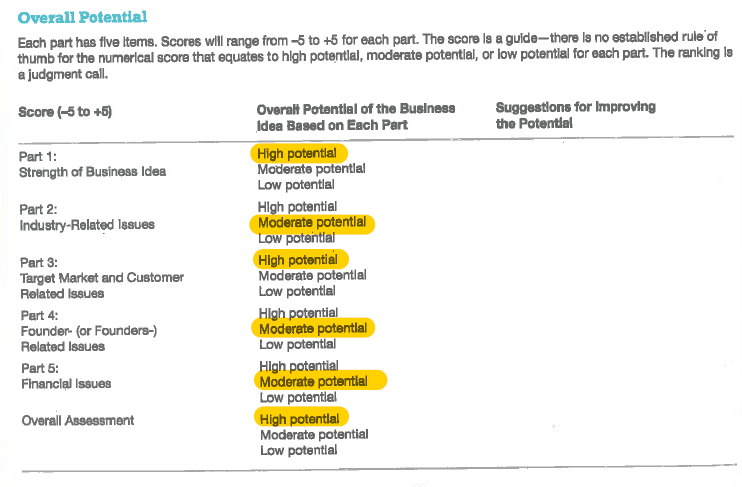Boutique Hotel Business Model For Start-Up Business
Question
Task: The objective of this individual assessment submission is to learn how to develop your own business idea, complemented by research and observational insights that detail why the need is compelling. Please submit a 1500-word business report of your idea, a detailed business model (BM) canvas, discussion of the interrelationships among the BM components that are essential to success, critical risks and assumptions, and overall feasibility. The business model canvas must be discussed in the report and included as an appendix.
Assessment Criteria:
- Effective explanation of the customer/market problem that needs solving and/or the reason the innovation is required. (15%)
- Persuasive argument of the customer/client benefits to be generated by the idea (10%)
- Discussion of the proposed business model (15%)
- Identification and discussion of the key interrelationships in the BM that will support success of the idea (10%)
- Critical success factors to be managed during execution of the idea (15%)
- Identification of critical risks and assumptions (10%)
- Evaluation of the overall feasibility of the idea (15%)
- Quality of written submission, minimum 6 peer-reviewed journals, and APA referencing format (10%).
Answer
Introduction
The study is aiming to deconstruct the boutique hotel business model for a new innovative idea for the selected organization. In the business environment, disruptive innovation refers to the element that helps in developing the market networks and the newvalue, which gradually disrupts the existing market networks, and values. As opined by Barnes (2016), the principle of lean entrepreneurship is based on shortening the cycle of product development and discovering the boutique hotel business model. The present business idea is based on a startup boutique hotel that uses the virtual reality (VR) and 360-degree room view for attracting customers and providing a tough competition to the other hotels.
Market problem and the needs for innovations
As stated by Griffin et al., (2017), the emerging trends of the customer needs and expectations from hotels are connectivity (breakfast, parking, location in accessible areas), technologically-upgraded service (mobile check-in and check-out, wifi connectivity) and sustainability (eco-friendly). However, the prime requirement of the travellers includes availability of pocket-friendly and good-quality service, as it is not possible for every individual to stay at star assigned hotels. Some may even find it useless to spend so much money for a hotel room, just to stay for 2 to 3 days (most of the travellers have plans for traveling to many places so they stay for maximum of 2- days at a single location). The implementation of VR systems and 360-degree view of the hotel rooms and the property premises, besides the available amenities, before booking them, in this new venture represented through boutique hotel business model seeks to address this issue majorly.
As argued by Huang, Backman, Backman & Chang (2016), sometimes, it is not the design of the hotel or it's interiors that are enough for the customers, as they want much more innovation and technology to get a satisfied stay. Thus, this is when the innovation within the service and management stand as the solution for the hotels to satisfy its customers and influencing their decision regarding repeated-visits.
Benefits generated form the idea
The present idea represented through boutique hotel business model is to open up a startup boutique hotel consisting of 20 rooms in Kingston town, Australia. Besides having all the possible and appropriate amenities for the customer, the hotel will also administer a technologically advanced infrastructure for managing its room booking service and more. The hotel will consist of the digital augmentation of Virtual Reality tour that will provide the visitors with the means of obtaining the digital first-person point-of-view of the hotel premises, locality as well as the amenities to be provided to the customers, on their visit, which would help the customers to book as per their specific needs. The 360-degree view of the hotel rooms offered to the customer would help have an experience of the room that they could book for their stay during traveling, before booking the room itself. Furthermore, as opined by Juan, Nannan, Changhui & Hamari (2019), VR will help in illustrating the room dimensions and the way to navigate through the hotel property.
Discussion of the boutique hotel business model
As explained by Marasco, Buonincontri, van Niekerk, Orlowski & Okumus (2018), the boutique hotel business model canvas (BMC) as per Osterwalder & Pigneur consists of 9 elements, each of which has a critical role to lay in the business operations. (The proposed BMC regarding the boutique hotel is attached in Appendix 1). Here, the boutique hotel business model canvas depicts the logistic partners, investors, legal partners. Customer and Booking.Com as the hotel's key partners for their new business. For maintaining hotel’s business, the key activities include fooding and lodging that is Boarding. The prime value proposition of the boutique hotel includes the service it provides that are value for money, the best services provided in proposed charges, online booking with Virtual Reality (360-degree view of the rooms and premises) and best room service for the guest with all kinds of quality food cuisines. As the customer channels, both digital and traditional media will be utilized for marketing and sales initiatives of the hotel; they would use the newspaper advertising, tv advertising, promotions on social networking sites like Facebook, Youtube and Instagram along with public references. The tourist and the urban population will be the targeted customer segment along with providing customer care service, loyalty points and discount offers, fast and good service to enhance the customer relationship. The HR, capital, utilities, infrastructure and food raw materials are the key resources along with the cost involved in every part of the boutique hotel business model incurs the Cost structure. Lastly, the hotel will incur the revenue stream through boarding, lodging and other rental like banquet hall, rooftop cafe and more.
Interrelationship with the boutique hotel business model canvas to support the idea’s success
The partnership with the technology providing companies that would provide the startup boutique hotel with Virtual Reality software and augmentation that would help in showing the customer 360-degree view of the hotel rooms that would facilitate the key activities like lodging and fooding. Thus, the key partners of the start-up hotel have a strong relationship with the key activities and the key resources as well that includes the infrastructure, utilities, capital and HR management, besides raw materials for the food made available to the customers (Rauschnabel, Felix, & Hinsch, 2019). The investors and the customers acts as the steady stream of revenue that is utilized by the company for continuing their activities and keeping-up with the value propositions, as promised. However, the key resources like infrastructure include the IT and Virtual Reality software that would enable the hotel to probe the values which are mentioned in the value proposition that would help in maintaining a strong customer relationship. Thus, the value proposition and customer relationship are strongly related which helps the hotel in incurring revenue streams and gaining market success.
What are the critical success factors managed during the idea execution through boutique hotel business model?
As stated by Van Kerrebroeck, Brengman & Willems (2017), customer satisfaction and customer loyalty as well as increase in the revenue generated from each of the rooms in the hotel serves as another determinant for success in the hospitality industry, which is no different in this case too. Steady flow of financial resources is another critical success factor for a startup hotel and the implementation of the VR software can be too expensive. Adaptability of the employees to th technologically advanced working systems as well as delivery of high-quality services to the customers is another important factor determining success.
Critical risk and assumptions
Owing to the fact that the details of the rooms, along with its interior décor and the amenities made available to the customers will be available over the booking platform, maintaining uniqueness in the services offered to the customers, among all other competitors in the market would be a problem. There is a risk of attaining only a temporary competitive advantage over the competitors, which might fade soon and thus, adversely influence the profitability of this hotel. As the hotel implements such advanced technological marketing strategies, free-cancellation facilities would not be possible and the initial amount for booking also might be a bit high, which might discourage the tourists from booking in this hotel. In addition, the hotel must assume that they have ample amount of resources to implement and maintain the Virtual Reality and 360-degree View systems, however costly it might be, for quite some time to come. Another assumption made by the company while launching the proposed value is that all their customers are tech-savvy and are well aware of these advanced technologies as well as the ways to utilize the same, given the fact that most of the tourists visiting Australia are millennial population.
Evaluation of the feasibility report
The potential view of the contemporary business idea has been analysed and presented in appendix 2. As per the evaluation basis the boutique hotel business model, it can be seen that the new business has the strength of taking advantage from the environmental trends that is the VR software that solves the customer related issues. The usage of the VR helps the company in entering into the market moderately that encourages the business (Yaoyuneyong, Foster, Johnson & Johnson, 2016). There are moderate industry related issues as the number of competitors is high in the hospitality industry and the industry is in the growth pages that reduces the potential to an extent.
The issues related to founders have been identified as moderate that can be coped up through the evaluation of customer experience along with practical lessons incurred through the operations and careful planning of business as well. Moreover, the hotel might face financial issues due to the moderate investment of capital that needs to be overcome so that the hotel can attract the investors and ensure the customer relationship and hence, the higher revenues can be generated.
Conclusion
The present study discusses the business presentation idea regarding the startup boutique hotel for implementing the virtual reality software by providing a 360-degree view of the rooms and hotel premises. The boutique hotel business model canvas, the reason of innovation, the critical success factor and the risk factors are mentioned, the feasibility report has also been elaborated within the study, which had depicted that the business idea has moderate to high chances of success in the chosen market segment.
References
Barnes, S. (2016). Understanding virtual reality in marketing: Nature, implications and potential. Boutique hotel business model Implications and Potential (November 3, 2016).
Griffin, T., Giberson, J., Lee, S. H. M., Guttentag, D., Kandaurova, M., Sergueeva, K., &Dimanche, F. (2017).Virtual reality and implications for destination marketing.
Huang, Y. C., Backman, K. F., Backman, S. J., & Chang, L. L. (2016). Exploring the implications of virtual reality technology in tourism marketing: An integrated research framework. International Journal of Tourism Research, 18(2), 116-128.
Juan, C., Nannan, X., Changhui, N., &Hamari, J. (2019). Virtual Reality Marketing: A Review and Prospects. Foreign Economics & Management, 41(10), 17-30.
Marasco, A., Buonincontri, P., van Niekerk, M., Orlowski, M., &Okumus, F. (2018). Exploring the role of next-generation virtual technologies in destination marketing. Journal of Destination Marketing & Management, 9, 138-148.
Rauschnabel, P. A., Felix, R., &Hinsch, C. (2019). Augmented reality marketing: How mobile AR-apps can improve brands through inspiration. Journal of Retailing and Consumer Services, 49, 43-53.
Van Kerrebroeck, H., Brengman, M., &Willems, K. (2017). When brands come to life: experimental research on the vividness effect of Virtual Reality in transformational marketing communications. Virtual Reality, 21(4), 177-191.
Yaoyuneyong, G., Foster, J., Johnson, E., & Johnson, D. (2016). Augmented reality marketing: Consumer preferences and attitudes toward hypermedia print ads. Boutique hotel business model Journal of Interactive Advertising, 16(1), 16-30.
Appendix
Appendix 1
Boutique hotel business model canvas
|
Key partners |
Key activities |
Value propositions |
Customer relationships |
Customer segments |
|
|
1. Logistic partners 2. Investors 3. Legal partners 4. Customers 5. Booking.com |
1. Lodging 2. Fooding 3. Boarding |
1. Value for money 2. Sales and marketing via online, television and newspaper 3. Best services within proposed charges 4. Online booking with Virtual Reality (360 degree) room view. 5. Best room service for the guest with all kind of quality food cuisines |
1. Customer care services 2. Good and fast service 3. Loyalty points and discount offers |
1. Tourists 2. Urban population |
|
|
Key resources |
Channels |
||||
|
1. Human resources 2. Infrastructure 3. Capital 4. Utility 5. Food raw materials |
1. Advertisement through newspaper, tv channels 2. Promotions on social networking sites and reference. |
||||
|
Cost structures |
Revenue streams |
||||
|
Taxes Capital expenditure IT infrastructure Staff salary Real estate Cost of goods Advertising Logistics |
1. Lodging 2. Boarding 3. Other rentals like banquet hall, rooftop cafe and more. |
||||
Appendix 2: Feasibility Report


















